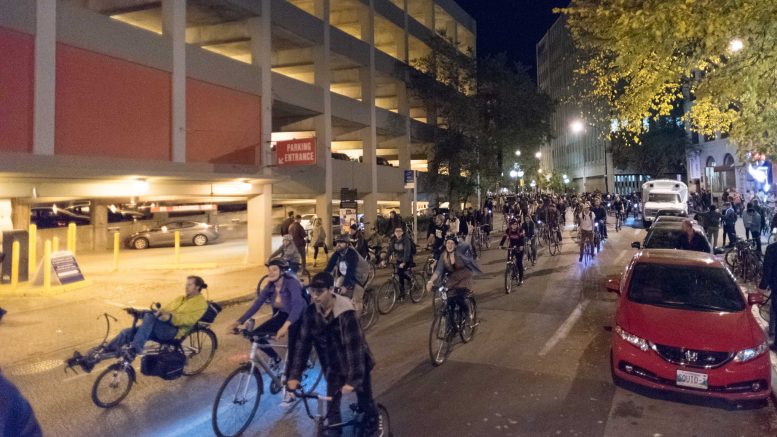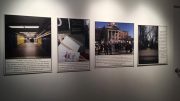I am new to the University of Manitoba campus. After spending my formative years in post-secondary at the University of Winnipeg, I now find myself taking courses at the U of M. I am slowly learning how best to navigate the underground maze of tunnels and, perhaps most importantly, figuring out where the best coffee is on campus.
I am also what some might call a rabid cyclist, using my fixed gear as my primary mode of transportation. Naturally, I took interest in an article that the Manitoban’s Levi Garber wrote bemoaning the state of our cycling infrastructure in Winnipeg, especially around the university. With that in hand, I made it my mission to regularly commute by bike to see if the perceptions so widely held were true and what myths could be busted.
Simply put, cycling to campus can either be a leisurely experience that keeps you fit or a series of frightening encounters avoiding traffic that regularly outpaces you. The number one tip I heard from more experienced cyclists than I was to avoid Pembina; the allure of some separated infrastructure is certainly helpful, but I found it to be inconsistent. As well, the underpass at Jubilee is in poor condition, which makes for a fairly bumpy ride. For Pembina, some stretches are fantastic, but they are preceded by open stretches where riders are competing with cars speeding by. I’d theorize that because most trips to campus follow this route, it seems like the best way to bike down, which may scare off beginners.
Sometimes, the longer route may be the safest and most enjoyable way to get around. Coming to school from South Osborne, I personally found that following the rapid transit line was pleasurable, allowing you to cross at Jubilee and continue through the meandering suburbs of Fort Garry. At Kebir Place, you have to cut right and join Pembina (in a separated lane, thankfully), but you can follow a path emanating from beyond the Pony Corral that will take you directly to campus via the Southwood Lands. You can also cut through St. Vital and take the Bishop Grandin Greenway, which consists of a wonderful paved path that hugs Bishop, but is open to large gusts of wind.
It doesn’t take much for someone to get confused with one of these paths, miss a turn and end up in the wrong place altogether. This vast network, while scenic in some ways, is not a direct route to campus, which means adding 10-15 minutes onto an already substantial commute. If the city of Winnipeg is serious about encouraging bike usage, as it has claimed in the past, then we need to build the infrastructure to back it up.
One possibility is a fully separated lane that would follow Pembina going both ways. While it may seem odd to take away a full lane of traffic, studies have shown that removing street parking in favour of bike lanes helps increase commerce to neighbouring businesses. For a major thoroughfare such as Pembina, there is potential for strip malls and small businesses to benefit from riders, as well as improving commuting conditions to the U of M. Such a move would help to increase density in places where it is sparse and take traffic off a major arterial road, which would help save on costly road repairs down the line.
In the meantime, we’re stuck with a loose network of paths that mostly lead to the university. One only has to show up at a Blue Bombers game in warm weather to see the huge influx of people trying to cycle to a game. Improving our infrastructure will help sport attendees and the daily commutes of students and professors, alongside reducing greenhouse gas emissions and improving our health.
Of note in this debate is the fate of the Southwood Lands, a former golf course acquired by the U of M in 2011. Currently, a lot of riders use paths through this area as they approach the main campus. As the university moves to develop this land, they would be wise to use it as an opportunity to improve local infrastructure, instead of following the cookie-cutter, car-oriented development patterns that we’ve seen in Winnipeg’s history.
Are you a cyclist who regularly commutes to campus? Zach wants to hear from you: tweet Zach @ZachFleish to share your tips.




